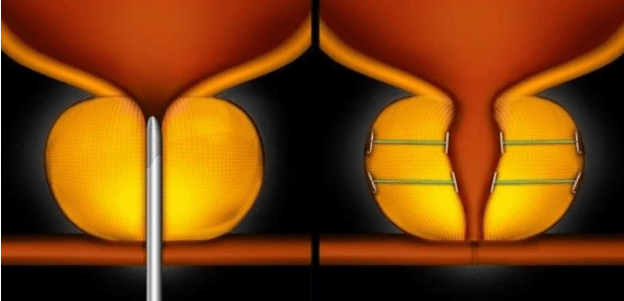The Evolution and Importance of Patient Gowns in Healthcare
In the realm of healthcare, patient gowns are a ubiquitous yet often overlooked element. These simple garments play a critical role in medical settings, ensuring comfort, hygiene, and accessibility during examinations and procedures. The evolution of the patient gown reflects broader trends in medicine, emphasizing patient dignity, safety, and the practical demands of healthcare environments.
Historical Background
The history of patient gowns dates back to the early 20th century. Initially, they were designed for practicality and functionality, with little consideration for patient comfort or modesty. Early gowns were often simple, one-size-fits-all designs made from coarse, plain materials. These early versions were functional, allowing easy access for medical examinations and procedures, but they were often uncomfortable and left patients feeling exposed.
Design and Functionality
Modern patient gown have come a long way from their rudimentary predecessors. Today, they are designed with multiple considerations in mind:
- Accessibility: Patient gowns are designed to provide healthcare professionals with easy access to different parts of the body. This is crucial for conducting thorough examinations, administering treatments, and performing surgeries. The typical open-back design facilitates this access while minimizing the need to fully disrobe.
- Hygiene: Infection control is a paramount concern in healthcare settings. Patient gowns are made from materials that can withstand high-temperature laundering and sterilization processes. Disposable gowns, made from non-woven synthetic materials, are also common, especially in high-risk environments.
- Comfort and Dignity: Recognizing the importance of patient comfort and dignity, modern gowns are designed with softer materials and better fits. Some gowns now feature wrap-around designs or additional fastenings to enhance modesty and make patients feel more comfortable.
- Versatility: Gowns are designed to be versatile to accommodate various medical situations. Some have snaps or Velcro closures for easy removal, while others are designed for specific procedures, such as maternity gowns with openings for breastfeeding.
Innovations in Patient Gown Design
The field of patient gown design has seen significant innovations aimed at improving the patient experience. These advancements address both the functional and emotional needs of patients:
- Modesty and Privacy: Designers have introduced gowns that offer more coverage and secure fastenings. Wrap-around designs, double-layer fabrics, and side-tie closures help maintain patient privacy and reduce feelings of vulnerability.
- Material Improvements: Modern gowns are often made from softer, more breathable fabrics, reducing discomfort and skin irritation. Some gowns incorporate moisture-wicking properties to keep patients dry and comfortable.
- Patient-Specific Designs: Specialized gowns are available for different patient populations. Pediatric gowns come in child-friendly designs with bright colors and patterns. Maternity gowns offer features that facilitate prenatal and postnatal care, such as front openings for breastfeeding.
- Sustainable Options: With increasing awareness of environmental impact, there is a growing trend toward sustainable patient gowns. These are made from biodegradable materials or are designed to be laundered and reused, reducing waste.
- Technological Integration: Some innovative patient gowns incorporate technology, such as sensors to monitor vital signs or embedded RFID tags for inventory management and patient tracking.
Challenges and Considerations
Despite these advancements, there are still challenges in patient gown design and implementation:
- One-Size-Fits-All Limitations: Many gowns are still produced in a one-size-fits-all model, which can lead to poor fit and discomfort for some patients. Sizing diversity is an area that needs more attention to ensure all patients feel comfortable and secure.
- Cost and Accessibility: High-quality, specially designed gowns can be more expensive, which might limit their availability in some healthcare settings, especially in low-resource environments.
- Infection Control: While disposable gowns offer benefits in terms of infection control, they also contribute to environmental waste. Balancing hygiene and sustainability is an ongoing challenge.
The Future of Patient Gowns
The future of patient gowns lies in balancing innovation with practical and ethical considerations. As healthcare continues to evolve, so too will the design and functionality of patient gowns. Future developments may include:
- Personalization: Advances in textile technology could allow for more personalized patient gowns that adapt to individual body shapes and sizes, enhancing comfort and functionality.
- Enhanced Comfort: Continued improvements in fabric technology will likely yield gowns that are even more comfortable, breathable, and soft against the skin.
- Eco-Friendly Materials: The push towards sustainability will drive the development of new materials that offer both comfort and environmental benefits, such as biodegradable or recyclable fabrics.
- Integrated Health Monitoring: Technological integration will advance, with more gowns featuring embedded sensors for real-time health monitoring, providing valuable data without the need for invasive procedures.
In conclusion, patient gowns are a fundamental component of the healthcare experience. While they have traditionally been seen as purely functional items, ongoing innovations are transforming them into garments that enhance patient comfort, dignity, and safety. As we look to the future, patient gowns will continue to evolve, reflecting the broader trends and priorities within the healthcare industry.






